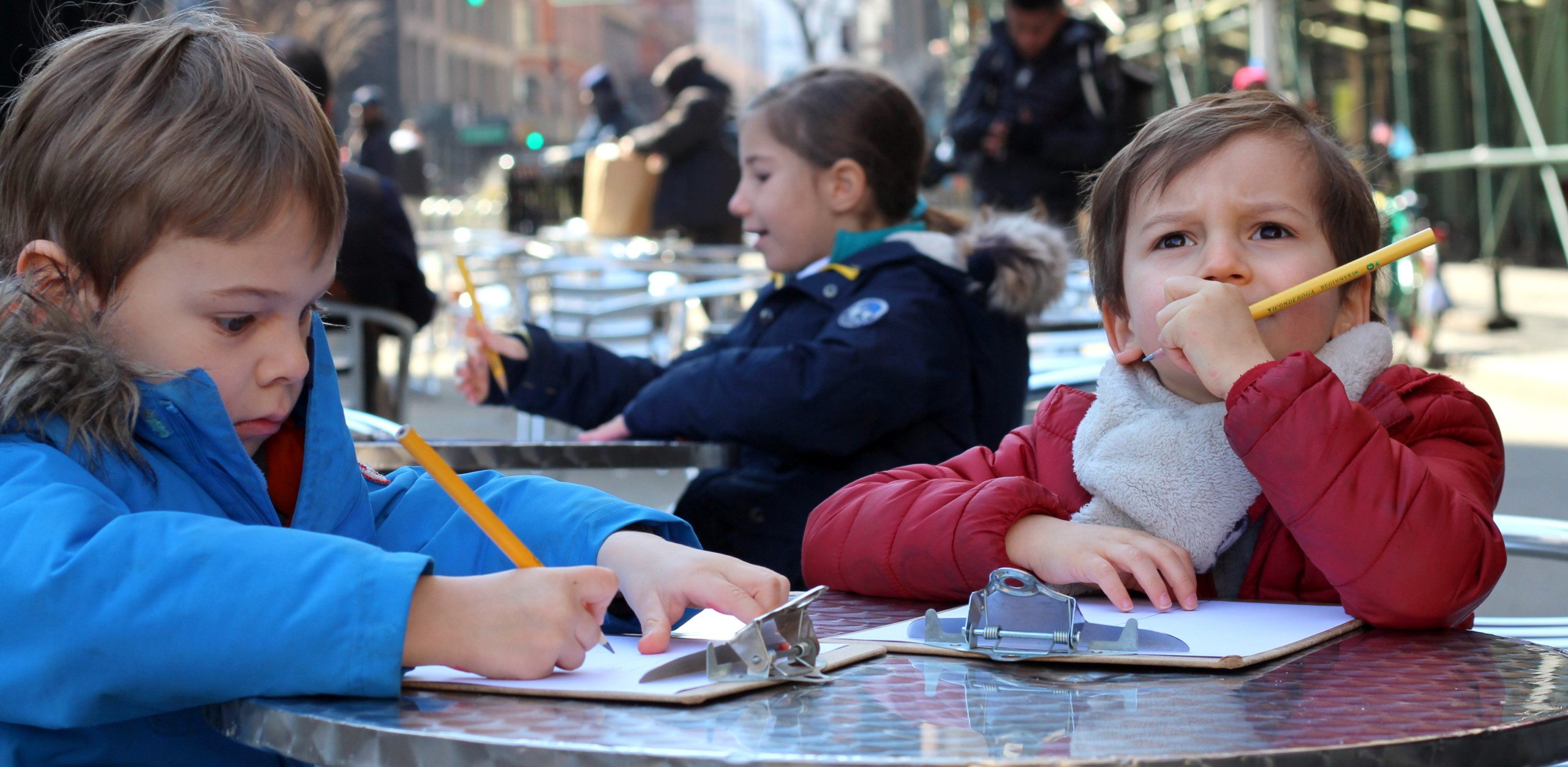At school when I was little we all spoke the same language, looked alike, and carried coordinating Tann’s backpacks. Everyone knew everyone else—there are probably more people living on 22nd Street between Park and Lexington than lived in my entire village—just as everyone had known my parents and my grandparents. Our lives were practically mapped out for us before they had even started. The mechanic, the pharmacist, the teacher, the nurse, the butcher, the baker, the candlestick maker. The only connection I had to the US was the (dubbed) TV shows I watched with my Dad on Sunday nights (he and Magnum P.I. had matching mustaches). There was no direct flight from my village to New York, and no path laid out to guide us here. America was Tintin’s version- a masterfully rendered caricature, an impossible, unimaginable elsewhere.
I was very happy at my school where everyone was the same as everyone else, but it wasn’t exactly fertile ground for thought. We had a hard time opening our eyes and our ears to the world around us—we were cocooned, oblivious, and comforted by our conformism. We held the word at arm’s length, possibly a little frightened of what we might find out there. It wasn’t until much later—too late—that I started to think, thanks to films, books, culture of all sorts, and, of course, teachers.
It was later still before I realized that I could be proactive and make school a place where students were encouraged to think. I don’t mean imposing a special class on kids during which they must adopt a serious, skeptical attitude or strike a pose akin to Rodin’s Penseur. By encouraging students to think, I mean giving them the opportunity to consider the greatest number of lives possible so that every path seems imaginable no matter how different. In order for that to happen, children need to meet people of diverse origins, read books about characters whose lives don’t resemble their own, learn something every day that they didn’t know before, and be proud of demonstrating their otherness and sharing what makes them unique.
In that regard, The École is a remarkable, thought-provoking place. With 49 different nationalities, a myriad of languages spoken, families coming from the four corners of the globe, and teachers from wide-ranging backgrounds, our students are perfectly placed to envision full, exciting lives for themselves—lives brimming with possibility. Every day at The École, we work to ensure that our students are amazed, that they keep their eyes wide open, and that they make the most of every moment—including during lunchtime when the number of activities on offer seems to grow each week. Our teachers continue to inspire and open paths to their students so they can make choices that make them as happy as possible.
It might not seem like rocket science, but not everyone has the chance to think. It’s something that needs to be learned, and like everything that’s learned, it’s best to start young.


